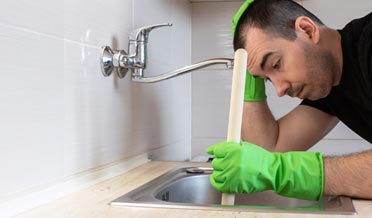Slow Flowing Drain: Causes and Solutions
Murphy’s Law—anything that can go wrong will go wrong, often at the worst possible time. This certainly holds true concerning a clogged drain; it usually happens while the whole family is preparing for an important event or a large meal. It puts everything on hold. It also reminds us how often we wash our hands, flush toilets, and take showers. Waiting for a plumber to arrive may not be an option.
Drain problems come in two general varieties:
- Localized clogs—a sink, toilet, or tub drain
- Major clogs at or near the lateral line
The culprit for major clogs is usually tree roots or broken drain lines, so let’s look at resolving localized clogs.
Slow Flowing Drain: Toilet Clogs
The soft nature of human waste does not usually cause drain clogs. The most common causes of toilet clogs are:
- Excess toilet paper. TP is manufactured to dissolve quickly, but too much of a good thing is a bad thing.
- “Flushable” wipes (which should not be flushed). The fibers of the wipes often are snagged or stick to soap or oils collected on the drain walls.
- Other items that should not be flushed, including accidental flushes, such as toys, small clothing items, and small electronics
If the toilet drain is clogged, continuing to flush will lead to an overflow. Wait for the wastewater to drain if possible before applying solutions. The first solution should be a plumber’s helper or plunger but be careful not to splash the wastewater on the floor.
A drain snake may be required if a plunger does not clear the clog. A simple snake can rip and push through the clog. If a simple snake is ineffective, calling a plumber will be the next step.
Slow Flowing Drain: Sink and Tub Clogs
We develop terrible drain habits for the sake of convenience, and we put many things down the drain that create problems. The major culprits for sink and tub clogs include:
- Hair often collects near the sink or tub, collecting in the P trap bend.
- Fibrous food scraps, such as those resulting from running the garbage disposal.
- Oils, grease, fats. These substances enter the drain as a liquid and solidify as they cool.
- Heavy soap, which utilizes oil. Soap may cause hair and other items to stick to the drain walls.
The real trouble comes from combining items, such as grease and ground-up potato peels.
Since fats are involved in many of these clogs, the first solution is a solution. Try this combination.
- Allow as much water to drain through as possible.
- Pour boiling water into the drain to soften the oil/fiber combination
- Mix 1 cup of baking soda and a 50/50 combination of water and white vinegar. This solution will begin to foam and give off carbon dioxide. Quickly pour the foaming solution into the drain. The alkaline solution will begin to dissolve the oil and fat.
- Quickly pour boiling water into the drain again
If the clog remains, use a plunger to loosen the clog further. Repeat if necessary.
If the clog consists mostly of hair, remove the drain cover, and use a hook or long-nose needle-nose pliers to remove the clog. Severe clogs may also require a plunger or drain snake.
Have a Slow Flowing Drain, Doctor Cool can help!
Let Doctor Cool help with your Slow Flowing Drain question before buying your home. Call Doctor Cool & Professor Heat today at 281-338-8751 or email Doctor Cool and let our professional Residential Plumber Contractors assist with all of your plumbing repairs questions.
